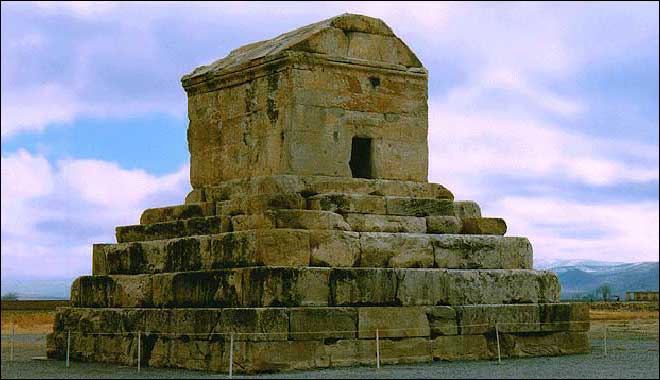The article “The Plurality of the Persian Empire: Part I – The Achaemenids to the Sassanians” was written by Wu Mingren for the Ancient Origins venue on August 7, 2018. For more information on these topics, readers may also wish to consult the following resource pages:
- The Achaemenids
- Cyrus the Great
- Military History and Armies of the Achaemenids
- The Parthians
- Military History and Armies of the Parthians
- The Sassanians
- Military History and Armies of the Sassanians
The version printed below has been edited from its original version in Ancient Origins. Kindly note that the images and accompanying captions as well as the video incorporated below do not appear in the original Ancient Origins posting.
=======================================================================================
The land of Persia (also known as Iran) has been the center of several important empires throughout history. Between the 6th and 4th centuries BCE, this was the land from which the mighty Achaemenids ruled their vast empire. During the time when the Western world was dominated by the Roman Empire, Persia was under the rule of first the Parthian, and then the Sassanian Empires, both of whom were Rome’s formidable rivals in the East. Persian empires were strong rivals and powerful military and cultural forces.
Empires of Ancient Persia explained in 10 minutes (History of Iran) (Source: Epimetheus in Youtube).
The Achaemenid Empire – Cyrus and His Successors
The Achaemenid Empire was one of the most important Persian empires in the ancient world. This empire was established around the middle of the 6th century BC by Cyrus II, called Cyrus the Great, who is also sometimes regarded as the greatest Achaemenid ruler.
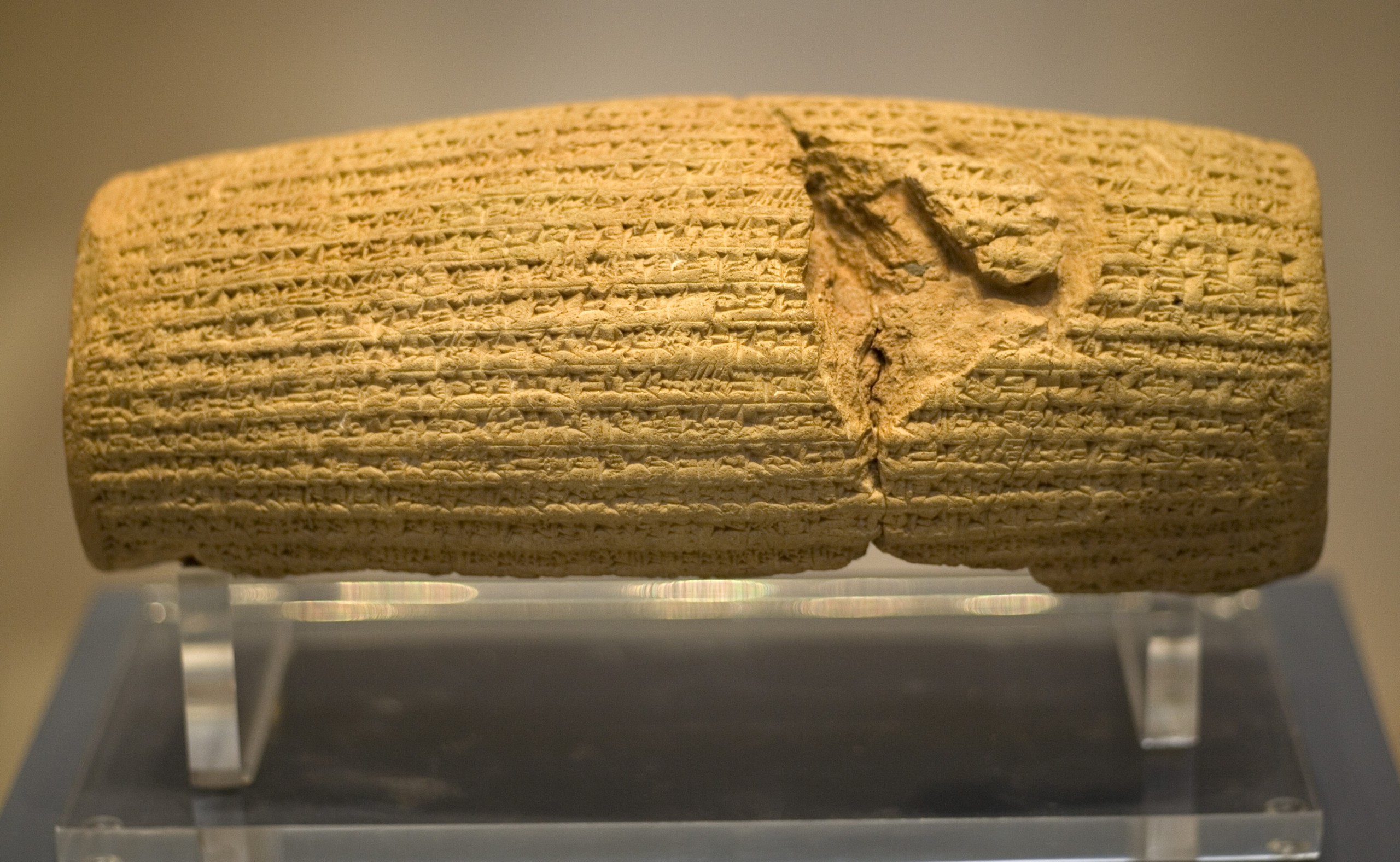
The Cyrus Cylinder housed at the British Museum (Picture Source: Angelina Perri Birney).
In 550 BCE, the Median Empire (which may be considered the first Persian empire) was overthrown by Cyrus. Several years later, Cyrus expanded westwards, defeating Croesus, the king of Lydia, in 546 BCE, thereby adding the western part of modern Turkey to his growing empire. In the east, the Neo-Babylonian Empire became a Persian province when it was conquered in 539 BCE.
The Achaemenid Empire was further enlarged by the successors of Cyrus. His son Cambyses II, for example, conquered Egypt, Nubia, and Cyrenaica (modern day Libya). The death of Cambyses in 522 BCE, however, nearly plunged the empire into chaos, as a number of usurpers vied for the throne.
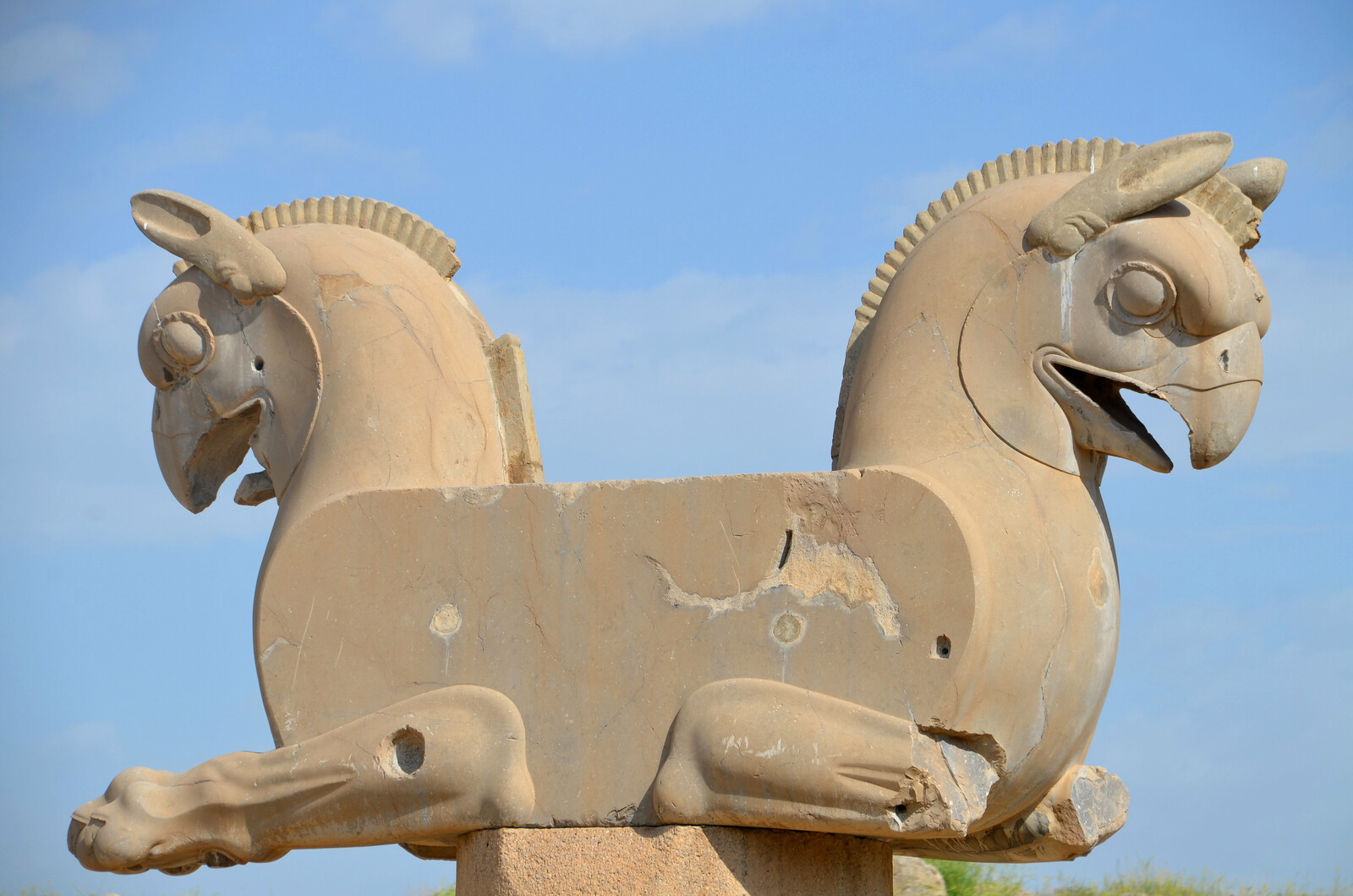
Double -griffin capital locally known as “Homa birds” probably from the Unfinished Gate (Courtesy of: Following Hadrian Photography).
Moreover, rebellions broke out across the empire, as the conquered peoples tried to seize the opportunity to regain their independence. Darius I , the Great, a member of the Achaemenid royal family, emerged victorious from these struggles, and quelled the various rebellions that had broken out. It was during Darius’ reign that the Achaemenid Empire reached its greatest territorial extent.
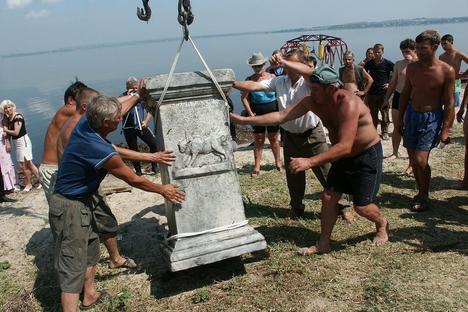
The stele of Darius I being excavated by Russian archeologists in southern Russia (Image Source: RBTH & Press Photo) … For more see here …
The Fall of the Achaemenid Empire
The Achaemenid Empire came to an end in 330 BCE, following the defeat of its last ruler, Darius III, at the Battle of Gaugamela in the previous year. Alexander the Great himself died in 323 BCE, and the former lands of the Achaemenid Empire were divided between the Seleucid Empire and the Ptolemaic Kingdom. It was only during the middle of the 3rd century BC that Persia was ruled once more by an indigenous elite. Around 245 BCE, a rebellion was led by a satrap by the name of Andragoras against Seleucus II, who had just ascended the throne. The ensuing chaos resulted in Parthia being overrun by the Parni, an Iranian tribe belonging to the Dahae, and the Parthian Empire was established by Arsaces I.
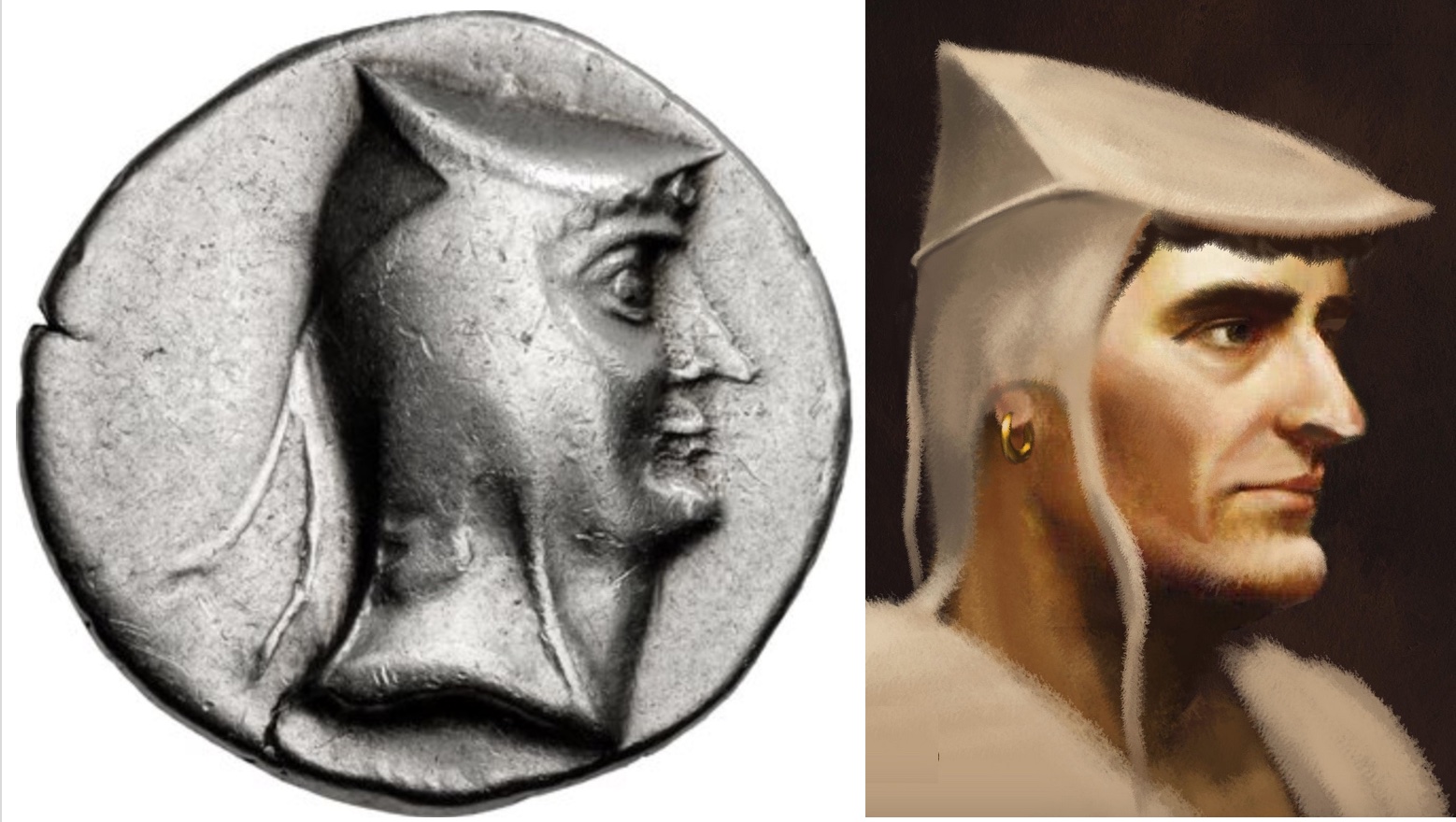
[Left] Nisa-mint Coin bearing image of Arsaces (Ashk) I (r. 247 – 217 BCE) (Source: Public Domain & Classical Numismatic Group); [Right] Recreation of Arsaces (Ashk) I with the use of Artificial Intelligence (AI) by user “naghash-bashi [u/Previous_Papaya455]” as posted in Reddit/Iran (Source: naghash-bashi [u/Previous_Papaya455] in Reddit).
The Parthian Empire Takes Center Stage
It was only during the 2nd century BC that the Parthians rose to power. Under Mithridates I the Great, who ruled from 171 to 138 BCE, the entire Iranian Plateau came under Parthian rule. The Parthians even succeeded in capturing Seleucia, the Seleucid capital, in 141 BC, and when Demetrius II, the Seleucid ruler, attempted to re-capture the territories he had lost, he was defeated and captured. The Seleucid Empire eventually came to an end when Syria, the last province under their control, became a Roman province in 64/3 BCE. For the Parthians, this meant that they now had to deal with another enemy, the Romans.
Conflict between Parthia and Rome inevitably broke out in the region. This began when the Roman general Crassus invaded Parthia in 53 BC. The invasion ended in a humiliating defeat for the Romans, and Crassus himself lost his life. The conflict between Pompey and Caesar, as well as the assassination of the latter in 44 BCE, were perfect opportunities for the Parthians to attack the Roman East.
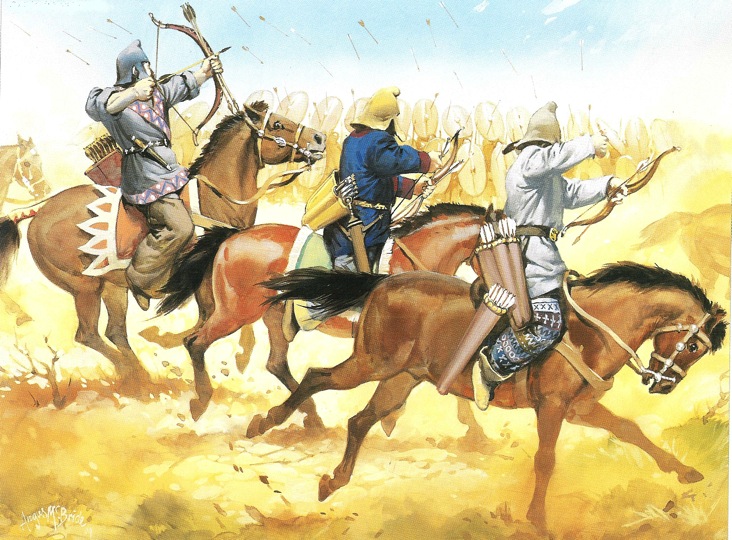
Parthian Horse archers engage the Roman legions of Marcus Lucinius Crassus at Carrhae in 53 BCE. Unlike the Achamenid-Greek wars where Achaemenid arrows were unable to penetrate Hellenic shields and armor, Parthian archery was now able to penetrate the armor and shields of their Roman opponents (Picture Source: Antony Karasulas & Angus McBride).
In 41 BCE, Syria, Cilicia, Caria, Phrygia, and Asia were invaded by the Parthians. They were, however, unable to occupy these territories, and in 39 BCE. Another massive invasion of the Parthian Empire mounted by Marc Antony in 36 BCE also ended in another Roman military defeat. Parthia’s conflict with Rome lasted until the collapse of the former in 224 CE.

The above illustration at left of Roman statesman and military leader Marc Antony (83-30 BCE) is based on the marble bust [at right] in Rome (Vatican Museums, Chiaramonti Museum). This was published in the 24th edition (summer 2021) of the Spanish military history journal “Historia de la Guerra” … for more see here …
The Sassanians Rise to Power
In that year, the Parthians were overthrown by Ardashir I, who established the Sassanian Empire. It turned out that the Sassanians were an even bigger threat to Rome than their predecessors were. This was evident during the reign of Ardashir’s successor, Shapur I, the Great, arguably the most formidable Sassanian ruler. Shapur expanded the Sassanian Empire both in the east and in the west.
As a result of Shapur’s westward expansion, the Sassanians came into conflict with the Romans. Shapur’s successes led to Rome suing for peace under Philip the Arab. Several years later, however, Shapur renewed the war against Rome. The Roman counter-attack ended in failure, and the emperor, Valerian, was captured by the Sassanians, which was a huge humiliation for Rome.
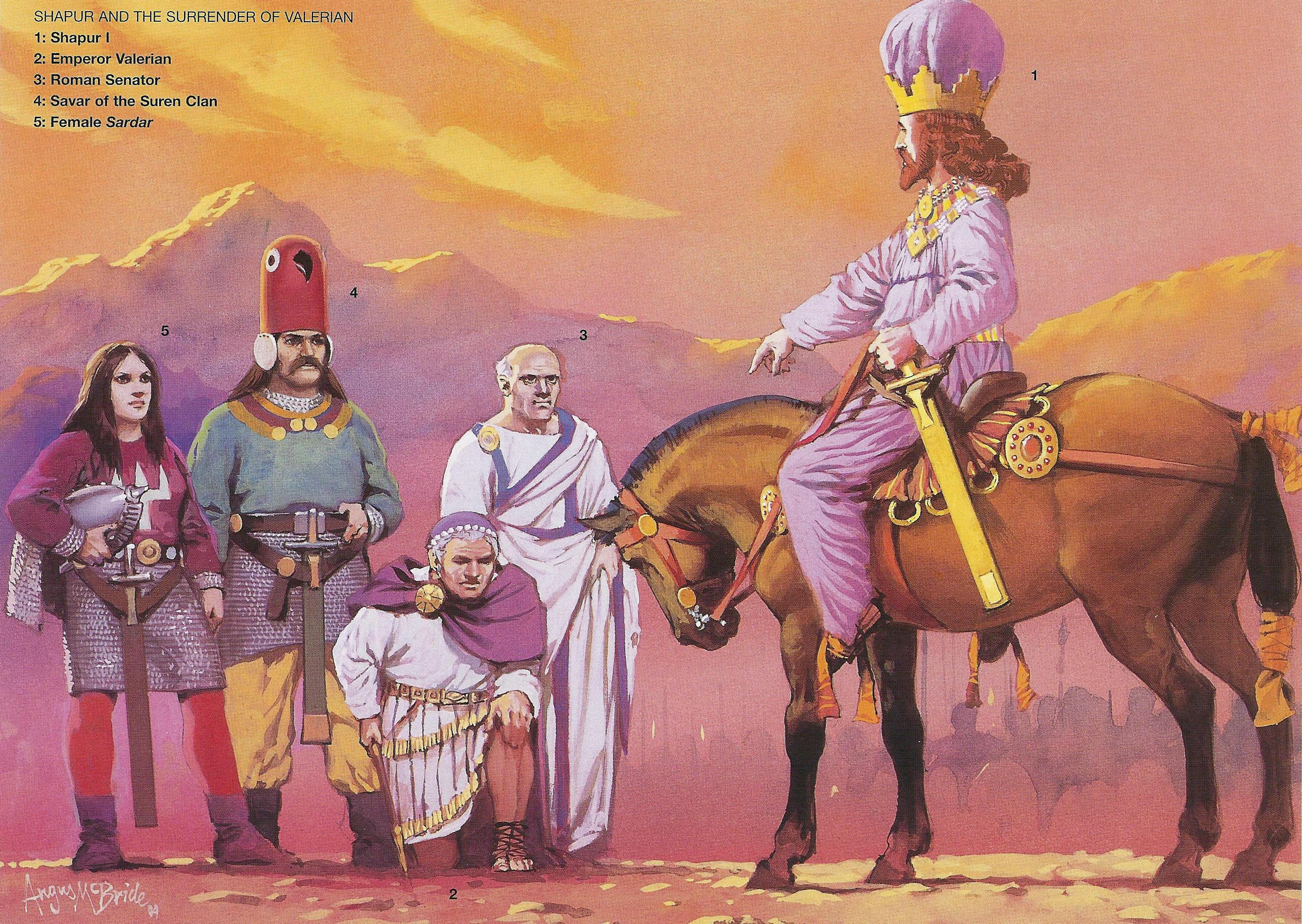
Emperor Valerian surrenders to Shapur I (241-272 CE) and Sassanian nobility at Edessa in 260 CE (Source: Kaveh Farrokh, 2005, Elite Sassanian Cavalry).
Fall of the Last Persian Empire
In the subsequent centuries, the Sassanians were able to co-exist peacefully with the Romans and their successors, the Romano-Byzantines. Two brief wars broke out between the two powers, though on the whole, the region was more peaceful than it had been previously.
Eventually, the Romano-Byzantines were no longer a threat to the Sassanian Empire. Instead, it was the Arabs from the south who, during the first half of the 7th century CE, were preparing to invade Persia. The conquest of Persia began in 633 CE, and was completed by 654 CE. The Sassanian Empire itself ended in 650 CE, following the death of its last ruler, Yazdgerd III.
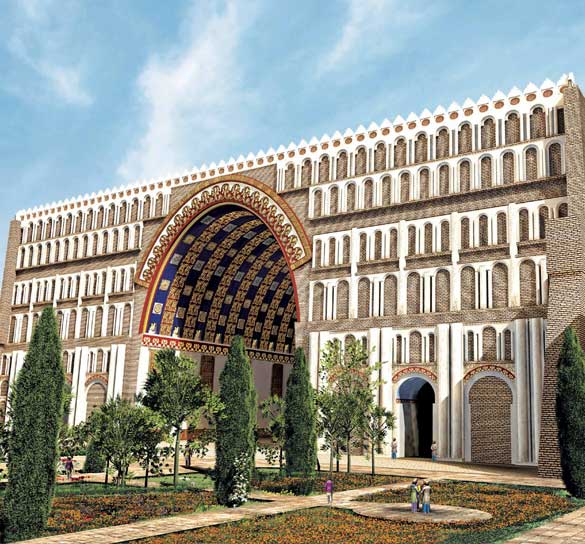
A reconstruction of Ctesiphon as it may have appeared in the 6th and early 7th centuries CE (Source: Sunrisefilmco.com in Pinterest).

